I Inaugurate This New Account With Minos Griffon From Saint Seiya Lost Canvas. :3

I inaugurate this new account with Minos Griffon from Saint Seiya Lost Canvas. :3
Ich eröffne dieses neue Konto mit Minos Griffon von Saint Seiya Lost Canvas. :3
Inauguro este nueva cuenta con un dibujo de Minos Griffon de Saint Seiya Lost Canvas :3
J’enaugure cet nouveau compte avec un dessin de Minos Griffon de Saint Seiya Lost Canvas :3
More Posts from Abgrundsgott and Others
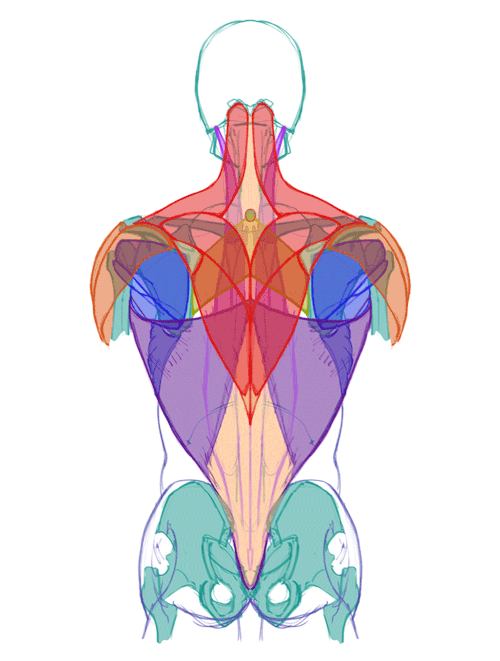

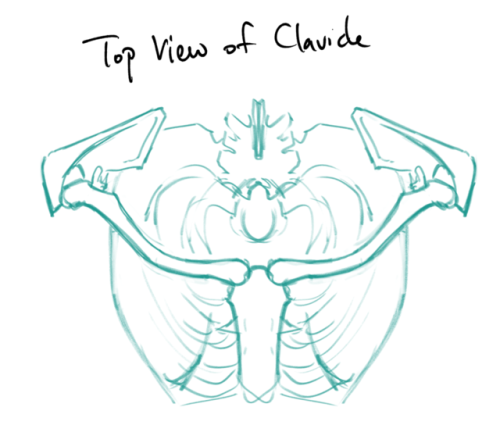
Back muscles!
SKELETAL LANDMARKS

shoulder blades: most of the upper back muscles attach to them directly, placement is affected by the arms. They can get obscured on very muscular backs, but most people these are the most dominant features!
7th cervical vertebra: neck bone that sticks out in most people, it sits in the center of that diamond shaped tendon in the middle of the trapezius
Also, obviously always keep the general shape of the ribcage and spine in mind, it was too much of a pain to draw them all in lol.
BACK MUSCLES

Erector Spinae: make the column-like structures around the spine, they extend all the way up to the neck, but you really only see the bottom part.
Latissimus Dorsi: are very thin, so most of the time you only see the structures underneath (such as the erector spinae). But when flexed, (for example, when climbing), you can see here on Jimmy Webb’s back that swooping curve it makes under the armpits.

The lats are also responsible for most of a person’s upper body strength and are the “V” shaped part of the back. For example, it’s how Bruce Lee was so strong despite being a small guy. Just look at those wings, man.


Infraspinatus, Teres Minor, and Teres Major: sit on the shoulder blade itself, and connects it to the top of the arm bone. These are responsible for a lot of the crazy shapes you see in bodybuilders’ backs.
Underneath them is the serratus anterior, which technically isn’t a back muscle but sits on the side of the ribs. These form that zig-zag pattern on the ribs that makes people look super ripped when visible with the external obliques, both wrapping around the sides of the torso. They’re not technically back muscles but fill out the silhouette, so it’s good to keep them in mind.
the glutes/butt muscles… they go farther up the back than one might assume and they, along with the pelvis, do affect the surface appearance of the lower back.

Rhomboid: simple shape, attaches from the inner edge of the shoulder blades to the middle of the spine at the 7th cervical vetebra to about the 4th or 5th thoracic vetebra. It does not overlap with the latissimus dorsi

Trapezius: divided roughly in the top, middle, and bottom sections. The top is quite thick and cylindrical and makes the sloping shape from the neck to the shoulders.
The bottom part is very thin; like the latissimus dorsi, the forms underneath it are visible when relaxed, making the rhomboid visible if it is flexed and the traps are not. Also not where the bottom part’s tendons attach to the shoulder blades; it outlines the curve of the shoulder blades even in people who are covered in brains muscles.
When fully flexed, it doesn’t taper into a point, but makes a small “w” shape at the bottom.
The 7th cervical vertebra sits at the center of the diamond-shaped tendons between the first and second sections of the trapezius. This part appears recessed in very muscular people.

Deltoid: not really a back muscle, but they overlap with the Infraspinatus and insert into the upper ridge of the shoulder blades, so it’s good to see how they interact with the others.

Ah, now for an example, featuring Thor himself. Note the curve where the traps meet the shoulder blades, the diamond-shaped tendon, and the rough “w” shaped contour of the lower back. Also note the two dimples, which is formed by the pelvis bones. They tend to be more prominent in women, although they are found in both men and women.
Try to find the back muscles on other people yourself, and then GET DRAWING

(PS, Generally it’s best to be able to simplify the forms instead of trying to render straight away - that’s how you know you really internalized the anatomy! I… honestly still don’t understand the back enough to do that yet, hence the lack of examples, unlike with the forearms post. But nonetheless, I hope that this is still useful as a general reference. I know it’s helped me at least remember what the different parts are, even if I don’t yet have a grasp of how they interact in motion!)

Nothing special, only the quickest sketch ever of my fav twins 💜💙
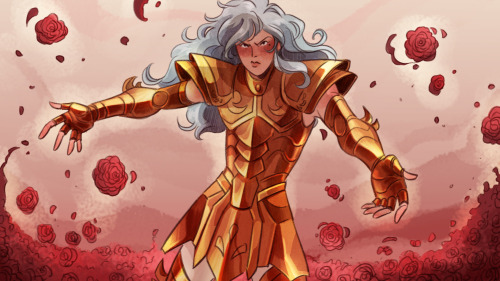
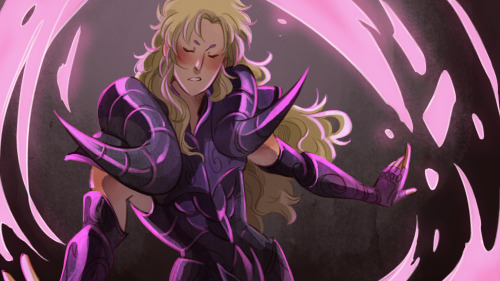
Powerful sassy guys~
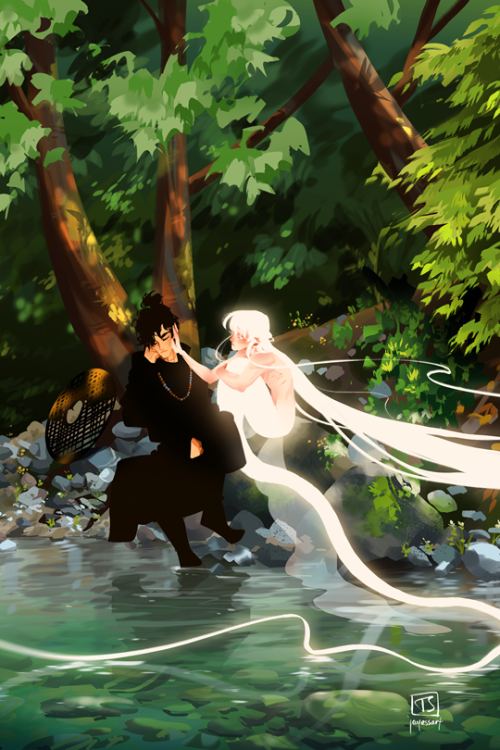
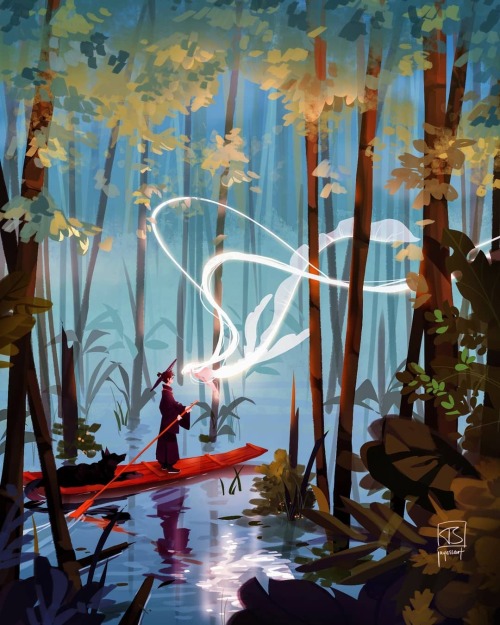
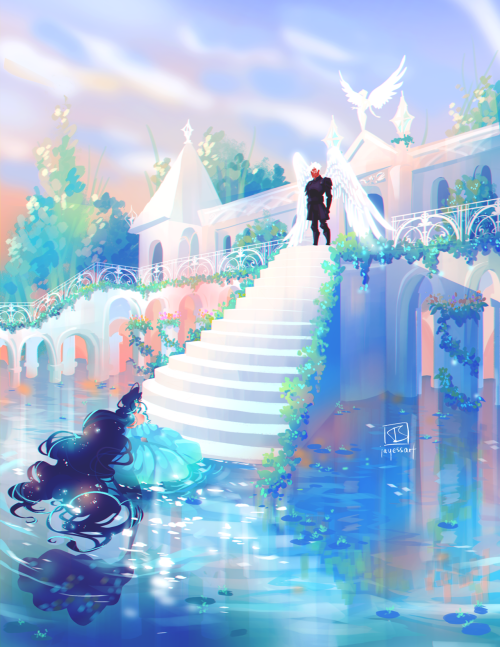
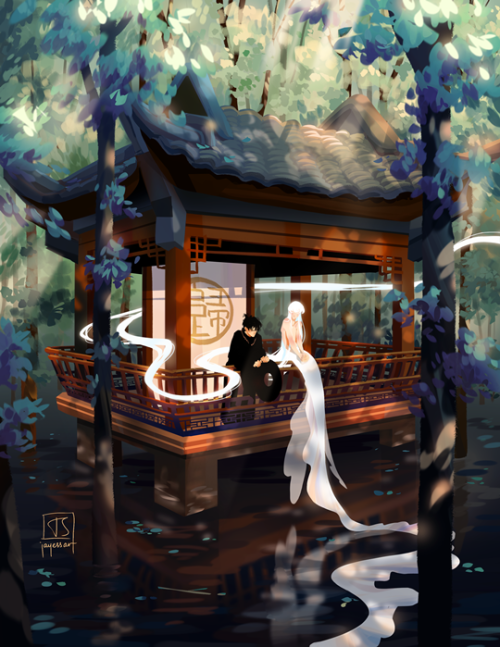
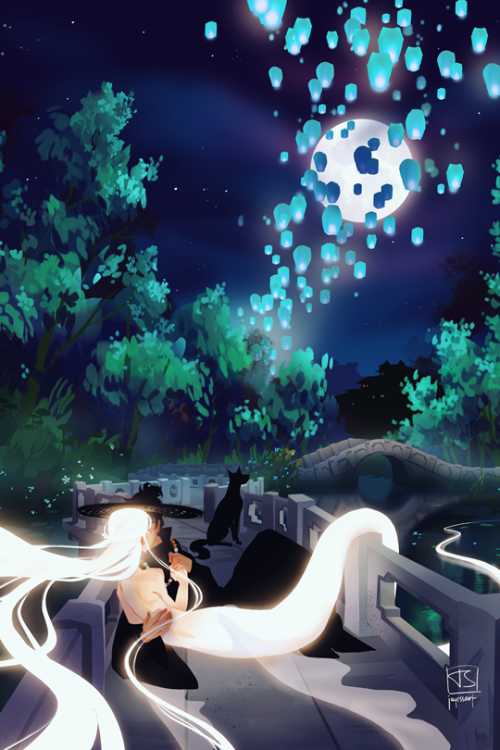
January Sun - https://jayessart.tumblr.com - https://www.youtube.com/channel/UCVe-DjLXMQSnvnH3QicZIOw - https://www.patreon.com/januarysun - https://www.linkedin.com/in/january-sun-bb8172165 - https://www.instagram.com/jayessart - https://twitter.com/jayessart



some doodles
hewwo my new obsession







sobs in french with glitter
Temple of Apollo Palatinus.
The greatness of Apollo in Rome was not just about arts, but politics and military, since he was tutelary deity of Republican Court.
When, in 36 bC, Octavian August won against Sexus Pompey's troops, he thanked Apollo for his providential action and so built a temple on Palatine Hill. The choice of the place upon which was guided by a divine manifastion, e.g in the same place where a lightning fell inside an August's property on Palatine Hill.
Inside the temple (it says that it had ivory doors and magnificent bas-reliefs) there was a sculptural group, object of worship: Apollo, his sister Diana and their mother Leto.
There were kept Sibylline Books, because Apollo was also God of Divination.

Roman naming conventions
During Roman Empire, the Romans employed a system of nomenclature, consisting of a combination of personal and family names. It was called Tria Nomina (lit. three names), divided in: praenomen, the name who are normally called with; nomen, which indicated the bloodline of the family or the clan they were from; and cognomen, like surname, which indicated the household such as the modern usage. At times, they would use a third surname, called agnomen, for the ones who were adopted by the new family, but it hadn't a formal use. Between men and women, there were few differences: women usually had father's or husband's praenomen instead of one for theirselves.




“He was spring, golden and bright. Envious Death would drink his blood, and grow young again” The Song of Achilles
Insta: @debbiebalboa

"Philtatos," Achilles replied, sharply. Most beloved.”
-
 paintingincyanesstuff19 liked this · 2 years ago
paintingincyanesstuff19 liked this · 2 years ago -
 elin-thebat liked this · 2 years ago
elin-thebat liked this · 2 years ago -
 mavapao liked this · 2 years ago
mavapao liked this · 2 years ago -
 mochaaakat liked this · 3 years ago
mochaaakat liked this · 3 years ago -
 st4r-myu liked this · 3 years ago
st4r-myu liked this · 3 years ago -
 mawaruai999 liked this · 3 years ago
mawaruai999 liked this · 3 years ago -
 daniferroe liked this · 3 years ago
daniferroe liked this · 3 years ago -
 fuck-you-butnicely liked this · 3 years ago
fuck-you-butnicely liked this · 3 years ago -
 knocblema liked this · 4 years ago
knocblema liked this · 4 years ago -
 diegobrandos-wife liked this · 4 years ago
diegobrandos-wife liked this · 4 years ago -
 z5mattyz5 liked this · 4 years ago
z5mattyz5 liked this · 4 years ago -
 haeki-illustrations liked this · 4 years ago
haeki-illustrations liked this · 4 years ago -
 n4omi-san liked this · 4 years ago
n4omi-san liked this · 4 years ago -
 polvoaranha liked this · 4 years ago
polvoaranha liked this · 4 years ago -
 astro-break reblogged this · 4 years ago
astro-break reblogged this · 4 years ago -
 kanaii24 liked this · 4 years ago
kanaii24 liked this · 4 years ago -
 abgrundsgott reblogged this · 4 years ago
abgrundsgott reblogged this · 4 years ago -
 bookworm-love reblogged this · 4 years ago
bookworm-love reblogged this · 4 years ago -
 bookworm-love reblogged this · 4 years ago
bookworm-love reblogged this · 4 years ago -
 bookworm-love liked this · 4 years ago
bookworm-love liked this · 4 years ago -
 earwendesirfalas liked this · 4 years ago
earwendesirfalas liked this · 4 years ago -
 catcoffee02 liked this · 4 years ago
catcoffee02 liked this · 4 years ago -
 ghoulette-lynn liked this · 4 years ago
ghoulette-lynn liked this · 4 years ago -
 the-three-judges liked this · 4 years ago
the-three-judges liked this · 4 years ago -
 tine0larry liked this · 4 years ago
tine0larry liked this · 4 years ago -
 glitterfilledcriminal liked this · 4 years ago
glitterfilledcriminal liked this · 4 years ago -
 mobilestates reblogged this · 4 years ago
mobilestates reblogged this · 4 years ago -
 mobilestates liked this · 4 years ago
mobilestates liked this · 4 years ago -
 wraithiro liked this · 4 years ago
wraithiro liked this · 4 years ago -
 dorksmithery liked this · 4 years ago
dorksmithery liked this · 4 years ago -
 leo-regulus reblogged this · 4 years ago
leo-regulus reblogged this · 4 years ago -
 thesleepingashes liked this · 4 years ago
thesleepingashes liked this · 4 years ago -
 gato-negro13 liked this · 4 years ago
gato-negro13 liked this · 4 years ago -
 mysteriouslyparadiseblog liked this · 4 years ago
mysteriouslyparadiseblog liked this · 4 years ago -
 xiuhcoatl05 liked this · 4 years ago
xiuhcoatl05 liked this · 4 years ago -
 abgrundsgott reblogged this · 4 years ago
abgrundsgott reblogged this · 4 years ago
